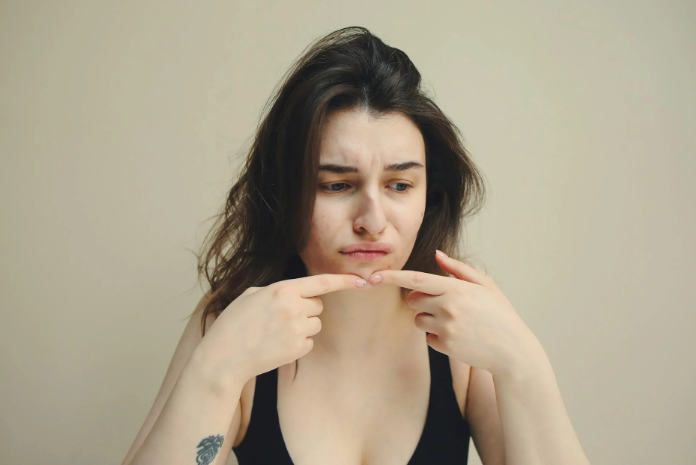Introduction: The Mystery of Milialar
Milia those small white or yellow bumps that appear on the skin can be quite perplexing. Unlike pimples, they don’t cause redness or pain but they might itch or irritate. In this article, we’ll delve into what milialar is why it occurs, and how you can manage it.
What Are Milia?
Milia are tiny cysts made of dead skin cells (and sometimes hair follicles) that become trapped just beneath the skin’s surface. They often appear as white- or yellow-colored bumps resembling miniature pearls. On darker skin tones milia may even present with a faint blue hue. Although they might be mistaken for whiteheads or pimples milia are distinct and not a form of acne.
Types of Milia
Primary Milia:
Congenital Milia: These spontaneously appear usually on the face (especially the nose) and are common in newborns.
Benign Primary Milia: Found in children and adults these can develop on the eyelids cheeks forehead and genital area.
Secondary Milia:
These occur due to skin damage oil-based skincare products dandruff or rosacea.
Causes and Prevention
Natural Exfoliation: Our skin naturally sheds old cells but sometimes they don’t fall off leading to milia.
Proper Skincare: Regular cleansing and avoiding oil-based products can help prevent milia.
Healthy Sleep Habits: Lack of sleep may contribute to their development.
Avoid Steroid Medications: Long-term use of steroids can increase the risk.
Treatment Options
Extraction: Dermatologists can safely remove milia using specialized tools.
Chemical Peels: Mild chemical peels can help exfoliate the skin and prevent milia.
Retinoids: Topical retinoids encourage cell turnover and may reduce milia.
Common Misconceptions about Milia
Let’s debunk some common misconceptions about milia:
Milia Are Pimples:
Reality: Milia are not pimples or whiteheads. Unlike acne, they don’t have an opening to the skin’s surface. Instead, they form tiny cysts just beneath the skin.
Why It Matters: Treating milia as pimples can lead to ineffective skincare routines.
Milia Are Contagious:
Reality: Milia is not contagious. They are not caused by bacteria or viruses.
Why It Matters: Understanding this prevents unnecessary worry or isolation.
Milia Only Affects Babies:
Reality: While congenital milia often appear in newborns they can occur at any age.
Why It Matters: Adults may dismiss milia assuming they’re only a childhood issue.
Sun Exposure Causes Milia:
Reality: Sun exposure is not a direct cause of milia. However, sun damage can affect overall skin health.
Why It Matters: Proper sun protection is essential but it won’t prevent milia directly.
Milia Can Be Squeezed Out:
Reality: Attempting to squeeze milia can lead to skin damage and scarring.
Why It Matters: Professional extraction is safer and more effective.
Remember milia are harmless but if you’re concerned or want them removed consult a dermatologist. Have you ever had Milia or do you know someone who has? 🤔
Treatment Options for Stubborn Milia
When dealing with stubborn milia consider the following treatment options:
Professional Extraction:
- Dermatologists or licensed skincare professionals can safely remove milia using specialized tools. They’ll make a small incision to extract the cysts.
- Why It Works: Extraction ensures complete removal without damaging the surrounding skin.
Chemical Peels:
- Mild chemical peels containing alpha hydroxy acids (AHAs) or beta hydroxy acids (BHAs) can help exfoliate the skin.
- Why It Works: Chemical peels encourage cell turnover preventing milia formation.
Topical Retinoids:
- Retinoids (such as tretinoin) promote skin cell turnover and can reduce milia.
- Why It Works: Regular use helps prevent clogged pores and encourages milia to resolve.
Microdermabrasion:
- This procedure involves gentle exfoliation using fine crystals or a diamond-tipped wand.
- Why It Works: Microdermabrasion removes dead skin cells improving milia appearance.
Avoid Harsh Skincare Products:
- Steer clear of heavy creams or oil-based products that can clog pores.
- Why It Works: Preventing clogs reduces milia formation.
Remember patience is key. Stubborn milia may take time to resolve but consistent care will yield results. Have you tried any of these treatments before?
Conclusion: A Question to Ponder
As we wrap up consider this: Have you ever noticed tiny bumps on your skin and wondered if they were milia? Understanding these little mysteries can help you take better care of your skin. What other skin concerns would you like to explore?
Remember to maintain a healthy skincare routine and those pesky milia might just vanish like morning mist!






